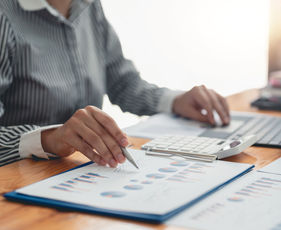According to the NIQ, more than half of Brits (63%) now shop at discount grocery stores to seek out cheaper prices at the till. This, coupled with the fact that from 2017 to 2023 almost 37% more Brits are using food banks, makes it clear to see that millions of people across the UK are struggling with rising food costs.
Despite the rate of inflation reducing by 5%, from a December 2022 peak of 11.4%, to a current rate of 6.4% in July 2023, it remains to be seen if this drop is impacting the economy, local businesses and the everyday lives of Brits?
A new report by Moneyzine.co.uk analyses the latest food bank usage data in comparison with unemployment rates to reveal whether the two correlate, or if it is in fact the high cost of living that is causing increasing reliance on food banks.
Wales has the fastest growing percentage of food bank users in the UK
The UK has seen hugely significant increases in food bank users over the last year - Wales has seen the highest increase of people using foodbanks of all UK nations in the last 12 months (40.75%), followed by England (37.46%), Scotland (30.08%) and Northern Ireland (29.47%)
Wales’ unemployment rate is also the highest across all the UK countries at 4.8%, followed by England (4.2%), Scotland (4%), and Northern Ireland (2.7%) - showcasing there is a correlation to the increasing food bank users in each country.
However, when comparing the percentage of Brits using food banks to those unemployed, average food bank user stats rates (4.83%) are higher than unemployment rates across the UK regions (3.93%), suggesting that unemployment is not the only factor impacting these stats, instead showcasing the true impact of the cost of living crisis.
Alongside this, food bank usage has seen a much more significant rise year-on-year, at 34.44% on average compared to a unemployment year-on-year increase at just 0.53% on average, which highlights the severity of the cost of living crisis in the UK.
Other contributing factors may include stagnant wage growth, the impacts of inflation and zero hours contracts.
Six out of nine English regions have higher foodbank usage rates than unemployment
When analysing how the percentage of the population using food banks compare against unemployment rates across English regions, 6 out of the 9 regions analysed have a higher food bank usage rate (including, The East, North East, North West, South East, South West, and Yorkshire and the Humber) - suggesting that unemployment rates are not the sole driver of food bank use in these regions.
Alarmingly, all 9 English regions in the study demonstrate significant year-on-year increases in foodbank use, painting a clear picture across England of households struggling to cope with the cost-of-living crisis. Whilst 7 English regions report a year-on-year increase in unemployment, it is at a significantly lower rate.
North East Employment Rate and Food Bank Usage
When analysing regional differences of food bank users versus unemployment rate in England - the North East has seen a significant decrease in its unemployment rate of 0.9%, but at the same time, it also witnessed a substantial increase in foodbank usage, rising from 100,334 to 154,403 (53.89%). The improved unemployment rate, yet increasing food bank usage indicates there are wider economic challenges and disparities in the region.
This region has seen the greatest difference between the competing factors, with the rate of increase year-on-year in foodbank use 54.79% higher than the change in unemployment. The region also has the largest food bank usage rate across all regions at 5.83%, suggestive that the North East is struggling significantly with the cost-of-living crisis, with more people using foodbanks than in other areas.
London's Unique Scenario
Despite being one of the regions with a higher unemployment rate in England (5.1%), London has a relatively lower estimated ratio of food bank users (8 out of 200).
However, food bank users in the capital have increased from 284,687 to 384,477 over the last year, which is equivalent to almost 100,000 more Londoners collecting food parcels among the cost of living crisis. While this figure is high, it is unsurprising considering the fact that London is 27% more expensive than anywhere else in the UK.
Here, the increase in foodbank usage was lower than the increase in unemployment. An interesting finding given the higher living costs associated with living in the capital.
East of England's Discrepancy
The East of England shows a relatively high estimated ratio of foodbank usage (10 out of 200) compared to its unemployment rate (4.4%). In this region, 5.11% of the population use food banks, with foodbank use increasing by 44.59%. This represents the 2nd largest region in terms of both total foodbank use as well as recent increases in football usage.
In this region, foodbank usage is greater than the unemployment rate. This may not be surprising given the East of England being one of the most expensive areas to live in the UK, outside of London. In this area, house prices average at £351,213, significantly higher than the national average of £287,546.
Yorkshire and the Humber
Despite a small increase in the employment rate by 1.1%, foodbank usage rose from 156,208 to 200,562, representing an increase of 28.39%. This registers as the smallest jump in the use of foodbanks out of all English regions. In total, 3.66% of the Yorkshire and the Humber population now use foodbanks.
The 3.66% foodbank use rate outpaces the 3.50%, highlighting a section of the local population still relying on foodbanks despite remaining in employment.
Despite this region seemingly performing better than other areas in the UK, an increase in foodbank use of nearly a third still offers a bleak picture for the state of the economy and the impacts on the everyday lives of people.
Across the UK, there has been a significant increase in food bank users across all regions, much higher than that of unemployment rates which speaks volumes to the ongoing cost of living crisis despite recent announcements of dips in consumer price inflation rates.
Local governments need to ensure they’re looking carefully at the regions where unemployment rates aren't matching up to an increase in food bank users. Unfortunately, there is clearly a stronger need for investment in community groups and local councils to prevent an ongoing growing reliance on food bank charities like the Trussell Trust across the UK.Jonathan Merry, expert at Moneyzine.com
Contributors




.jpg)
.jpg)

.jpg)